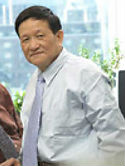| Abstract: |
Rapamycin, an actinomycete macrolide lactone that inhibits cytokine-induced immunoactivation, and cyclosporine, an endecapeptide that prevents transcription of lymphokine messenger RNA, display mutually synergistic interactions in vitro and in vivo. Using the rigorous median-effect analysis to dissect the nature of immunosuppressive drug interactions, rapamycin significantly augmented the inhibitory effects of cyclosporine and/or dexamethasone upon human peripheral blood lymphocyte activation by phytohemagglutinin,anti-CD3 monoclonal antibody, and mixed lymphocyte reaction. Furthermore, the addition of rapamycin potentiated the activity of cyclosporine to reduce cytotoxic cell generation and precursor frequency during in vitro alloactivation, using cell-mediated lympholysis and limiting dilution analyses, respectively. Similarly, cyclosporine potentiated the inhibitory effects of rapamycin upon proliferation of IL-2 (CTLL-2) and IL-6 (MH60.BSF-2) lymphokine-dependent cell lines. Line weaver-Burk plots of the Michaelis-Menton equation suggested rapamycin inhibits IL-2 signal transduction in competitive, and IL-6 signal transduction in noncompetitive fashion, suggesting distinctive components of the various cytokinereceptor mechanisms. In vivo the cvclosporine/rapamycin combination exerted synergistic immunosuppression of rejection reactions in rats toward heterotopic cardiac allografts, using concentrations at which drugs were individually ineffective. These observations suggest that cyclosporine and rapamycin may be combined at significantly reduced doses to achieve unprecedented levels of immunosuppressive efficacy. © 1991 by Williams & Wilkins. |
| Keywords: |
signal transduction; controlled study; human tissue; drug potentiation; conference paper; cells, cultured; cell growth; dexamethasone; cytotoxicity; drug synergism; lymphocyte activation; t-lymphocytes, cytotoxic; hematopoietic stem cells; lymphocyte; lymphocytes; rapamycin; sirolimus; cyclosporin; immunosuppressive agents; human experiment; cyclosporins; okt 3; human; priority journal; lymphokines; support, non-u.s. gov't; support, u.s. gov't, p.h.s.; polyenes
|



